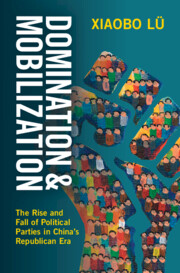Book contents
- Domination and Mobilization
- Domination and Mobilization
- Copyright page
- Dedication
- Contents
- Figures
- Tables
- Acknowledgments
- 1 The Reversal of Fortune of Revolutionary Parties
- 2 A Theory of Party Building by Revolutionary Parties
- 3 Prewar Resource Mobilization (1921–1937)
- 4 Reversal of Fortune
- 5 The CCP
- 6 Mao’s Rise and the Birth of a Strong Party (1935–1945)
- 7 The KMT
- 8 The Legacies of Party Building in China and Beyond
- Appendices
- References
- Index
3 - Prewar Resource Mobilization (1921–1937)
Published online by Cambridge University Press: 11 June 2025
- Domination and Mobilization
- Domination and Mobilization
- Copyright page
- Dedication
- Contents
- Figures
- Tables
- Acknowledgments
- 1 The Reversal of Fortune of Revolutionary Parties
- 2 A Theory of Party Building by Revolutionary Parties
- 3 Prewar Resource Mobilization (1921–1937)
- 4 Reversal of Fortune
- 5 The CCP
- 6 Mao’s Rise and the Birth of a Strong Party (1935–1945)
- 7 The KMT
- 8 The Legacies of Party Building in China and Beyond
- Appendices
- References
- Index
Summary
This chapter, together with the succeeding one, highlights the essential role that resource mobilization played in the rise and fall of the CCP and KMT from 1921 to 1945. Using a wide range of party and government archives during the Republican Era, I trace the scale and sources of financial revenues mobilized by these two parties. These novel data provide new insights on the financial undertakings of both parties throughout this era. I reveal that the KMT benefited from its elite mobilization infrastructure in urban and coastal China and consistently maintained a more robust fiscal foundation than the CCP prior to the Sino-Japanese War, hence establishing its dominance in China’s political landscape. On the contrary, the CCP relied on meagre financial support from the Comintern and ad hoc expropriation of rural elites, struggling to mobilize a consistent flow of financial resources.
Information
- Type
- Chapter
- Information
- Domination and MobilizationThe Rise and Fall of Political Parties in China's Republican Era, pp. 55 - 74Publisher: Cambridge University PressPrint publication year: 2025
